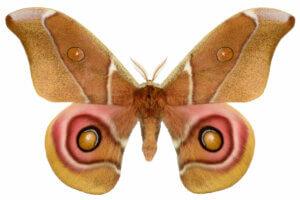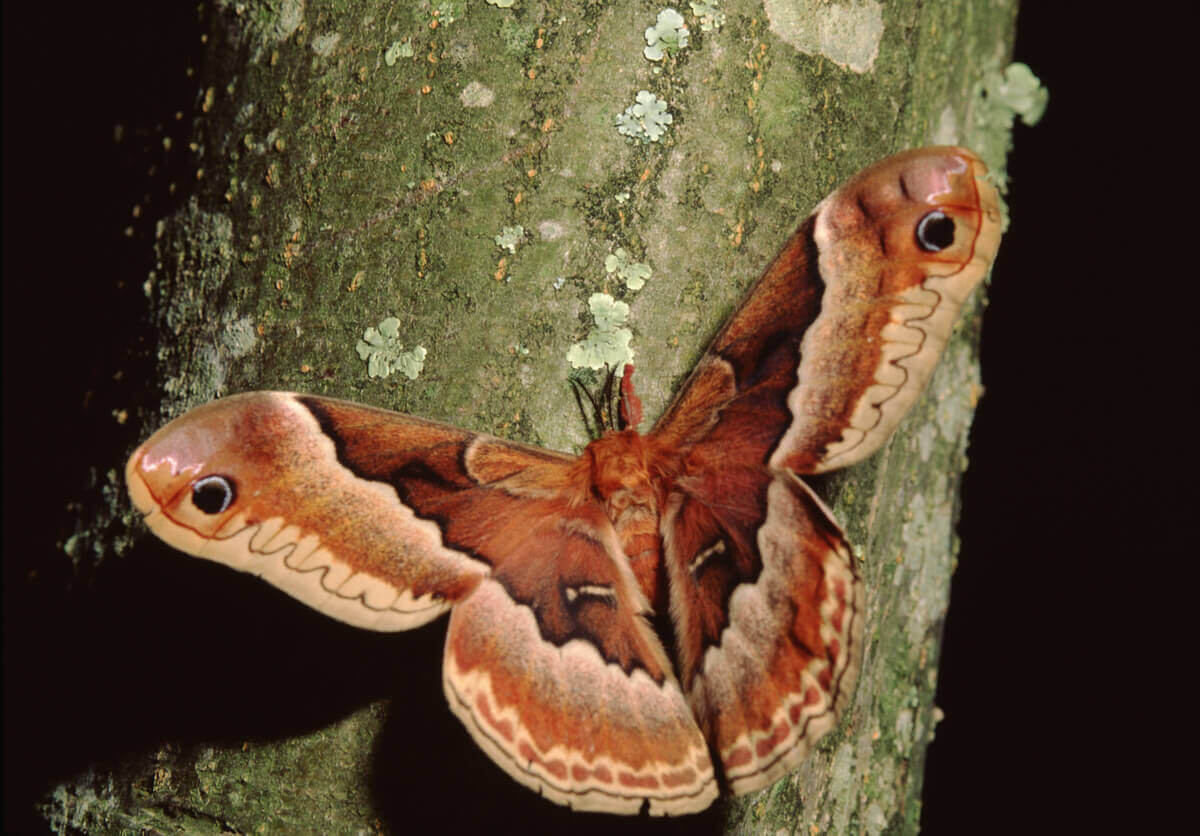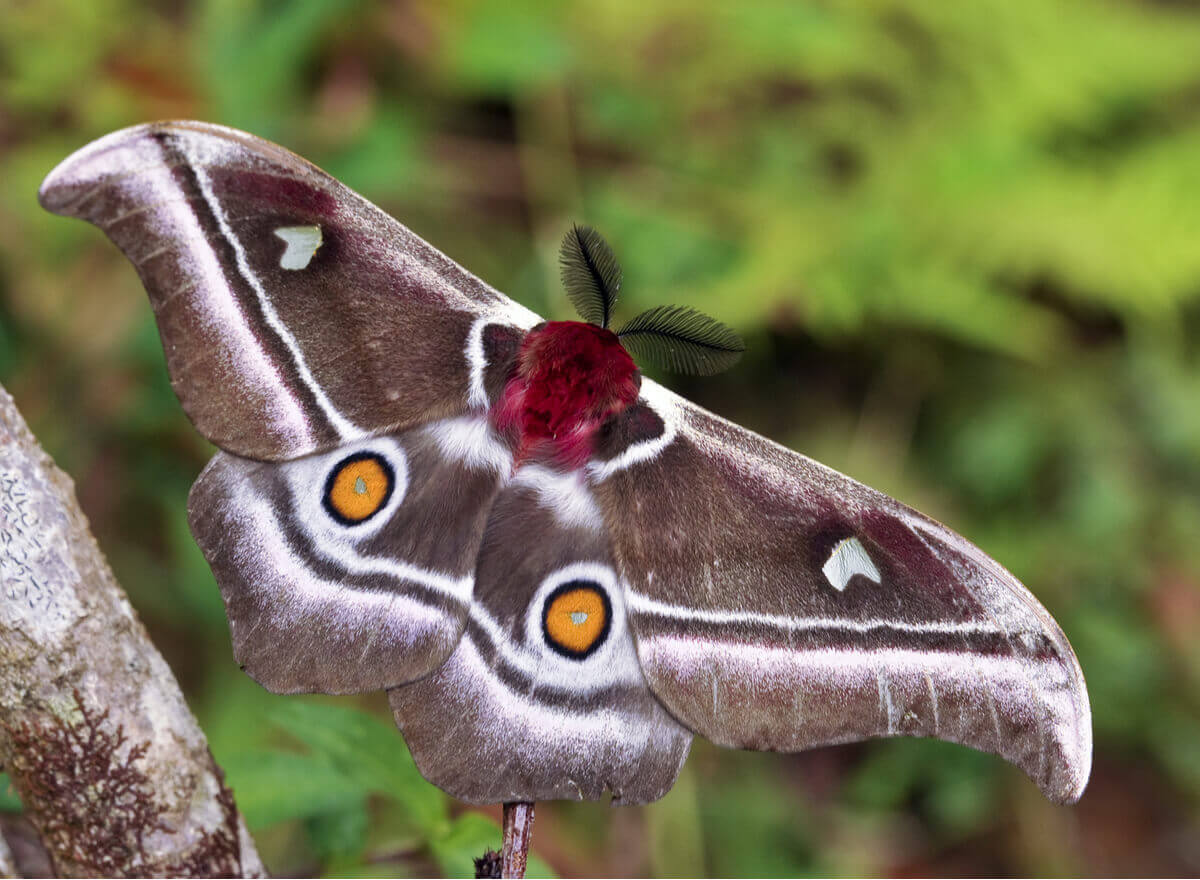All About Deaf Moths and Acoustic Camouflage


Written and verified by biochemistry Luz Eduviges Thomas-Romero
According to scientists, there are species of both hearing and deaf moths. In these invertebrates, hearing is a trait that allows them to avoid their main predator: bats.
Therefore, how deaf moths evade predation has been the subject of research. Would you like to know more about this fascinating phenomenon? Keep reading!
How does echolocation work and how to avoid it?
First, it’s important to note that bats detect their prey by emitting pulses of sound waves and receiving the echo of this signal off of solid objects. If the material that “bounces the waves” moves, as is the case with moths in flight, the resulting signals will move in frequency.
Thus, the changes in these waves allow the bat to detect the speed of its prey. This is also useful in the human world, as we use radio waves because they can travel long distances in the air, even in the presence of fog or precipitation.
It’s important to emphasize that humans can’t hear the ultrasounds emitted by echolocation bats. However, some insects, such as moths, beetles, and crickets, are capable. When an insect hears its predator, it can evade it, for example, by flying in a zigzag or spiral. By doing so, they can avoid becoming prey to bats.
In short, while many nocturnal insects – including moth species – evolved to hear the ultrasonic calls of bats, others, like deaf moths, didn’t. How then do they survive the predators that stalk them?

Deaf moths have another strategy
Expert entomologists have identified the escape strategy of two species of deaf moths, Antherina suraka and Callosamia promethean. The researchers determined that these deaf moths use noise-canceling scales on their bodies to avoid detection by predators.
They also found that these hair-like growths can absorb up to 85% of the sound waves emitted by the bats. In this way, these structures act as a kind of biological stealth coating.
The acoustic camouflage coat
Just as visual camouflage makes things difficult to see, acoustic camouflage makes the moth difficult to detect with sonar. Although moths and butterflies have similar wings, most butterflies are active during the day and don’t face the threat of bat predation.
On the other hand, moths that have nocturnal habits have scales on their bodies and around their wing joints, which are thicker and denser than those of butterflies.
The scales of moths resemble a fur coat and absorb sound. In this sense, the scales that make up this biological garment are structured at a microscopic level, so they vibrate at the right frequencies to absorb the ultrasound waves emitted by bats.

Man could imitate deaf moths
Several researchers on deaf moths showed that the scales on the bodies of deaf species were structurally similar to the fibers used in the commercially available soundproofing technology. Thus, several studies could contribute to the development of biomimetic materials from these scales.
This could contribute to the design of better absorbing and thinner noise control devices. For this reason, it’s possible that, in the future, scientists could be inspired by these moths to develop wideband and multidirectional ultrasound absorbers.
According to scientists, there are species of both hearing and deaf moths. In these invertebrates, hearing is a trait that allows them to avoid their main predator: bats.
Therefore, how deaf moths evade predation has been the subject of research. Would you like to know more about this fascinating phenomenon? Keep reading!
How does echolocation work and how to avoid it?
First, it’s important to note that bats detect their prey by emitting pulses of sound waves and receiving the echo of this signal off of solid objects. If the material that “bounces the waves” moves, as is the case with moths in flight, the resulting signals will move in frequency.
Thus, the changes in these waves allow the bat to detect the speed of its prey. This is also useful in the human world, as we use radio waves because they can travel long distances in the air, even in the presence of fog or precipitation.
It’s important to emphasize that humans can’t hear the ultrasounds emitted by echolocation bats. However, some insects, such as moths, beetles, and crickets, are capable. When an insect hears its predator, it can evade it, for example, by flying in a zigzag or spiral. By doing so, they can avoid becoming prey to bats.
In short, while many nocturnal insects – including moth species – evolved to hear the ultrasonic calls of bats, others, like deaf moths, didn’t. How then do they survive the predators that stalk them?

Deaf moths have another strategy
Expert entomologists have identified the escape strategy of two species of deaf moths, Antherina suraka and Callosamia promethean. The researchers determined that these deaf moths use noise-canceling scales on their bodies to avoid detection by predators.
They also found that these hair-like growths can absorb up to 85% of the sound waves emitted by the bats. In this way, these structures act as a kind of biological stealth coating.
The acoustic camouflage coat
Just as visual camouflage makes things difficult to see, acoustic camouflage makes the moth difficult to detect with sonar. Although moths and butterflies have similar wings, most butterflies are active during the day and don’t face the threat of bat predation.
On the other hand, moths that have nocturnal habits have scales on their bodies and around their wing joints, which are thicker and denser than those of butterflies.
The scales of moths resemble a fur coat and absorb sound. In this sense, the scales that make up this biological garment are structured at a microscopic level, so they vibrate at the right frequencies to absorb the ultrasound waves emitted by bats.

Man could imitate deaf moths
Several researchers on deaf moths showed that the scales on the bodies of deaf species were structurally similar to the fibers used in the commercially available soundproofing technology. Thus, several studies could contribute to the development of biomimetic materials from these scales.
This could contribute to the design of better absorbing and thinner noise control devices. For this reason, it’s possible that, in the future, scientists could be inspired by these moths to develop wideband and multidirectional ultrasound absorbers.
All cited sources were thoroughly reviewed by our team to ensure their quality, reliability, currency, and validity. The bibliography of this article was considered reliable and of academic or scientific accuracy.
- Neil, T. R., Shen, Z., Robert, D., Drinkwater, B. W., & Holderied, M. W. (2020). Thoracic scales of moths as a stealth coating against bat biosonar. Journal of the Royal Society Interface, 17(163), 20190692. http://doi.org/10.1098/rsif.2019.0692
- Leman, J. (2018). Sound-absorbent wings and fur help some moths evade bats. Science News, November 14.
- Neil, T. R., & Shen, Z. (2018). Stealthy moths avoid bats with acoustic camouflage. The Journal of the Acoustical Society of America. 144 (3), 1742.
- Shen, Z., et al. (2018). Biomechanics of a moth scale at ultrasonic frequencies. PNAS. 115 (48), 12200-12205.
This text is provided for informational purposes only and does not replace consultation with a professional. If in doubt, consult your specialist.








